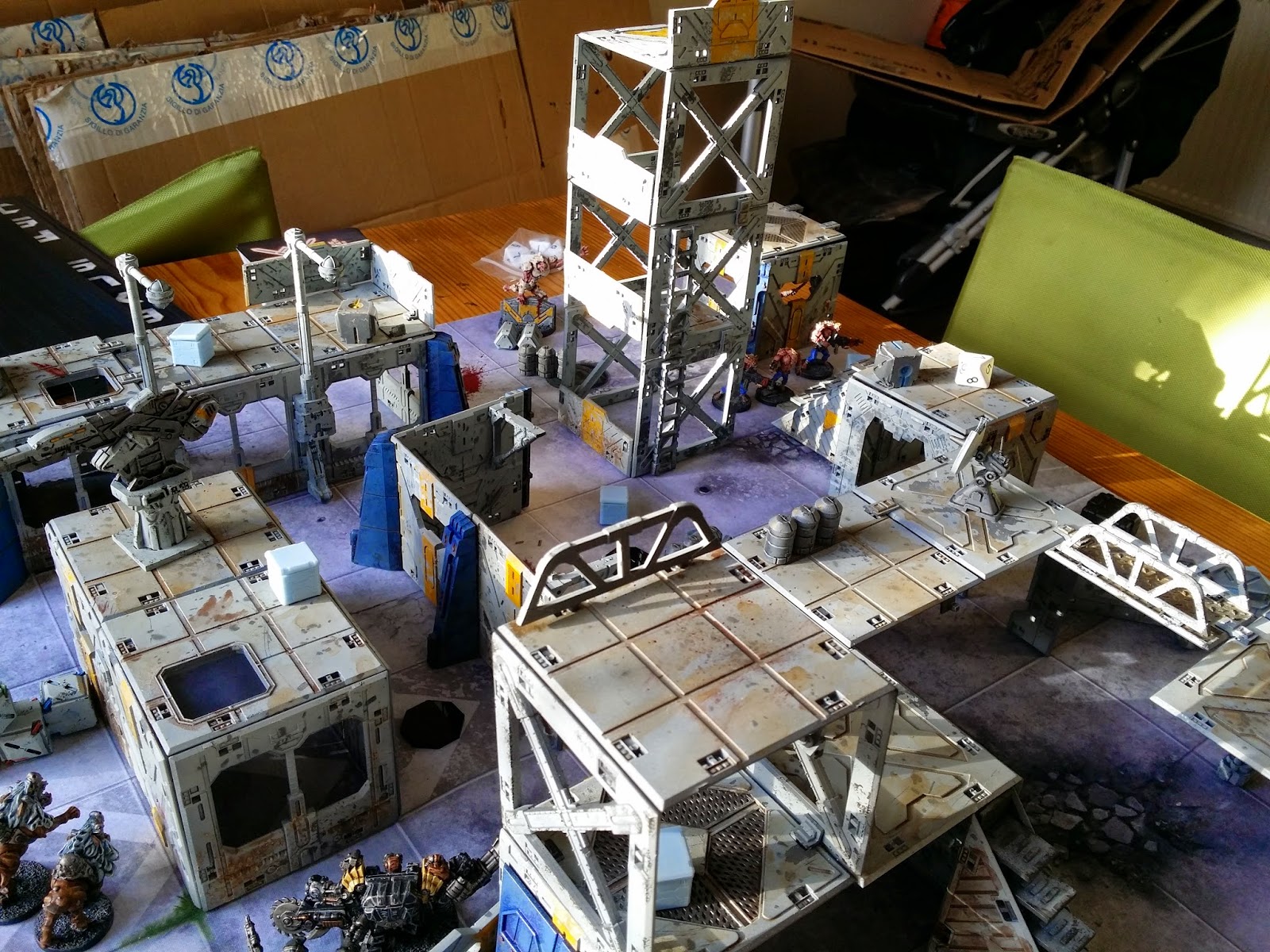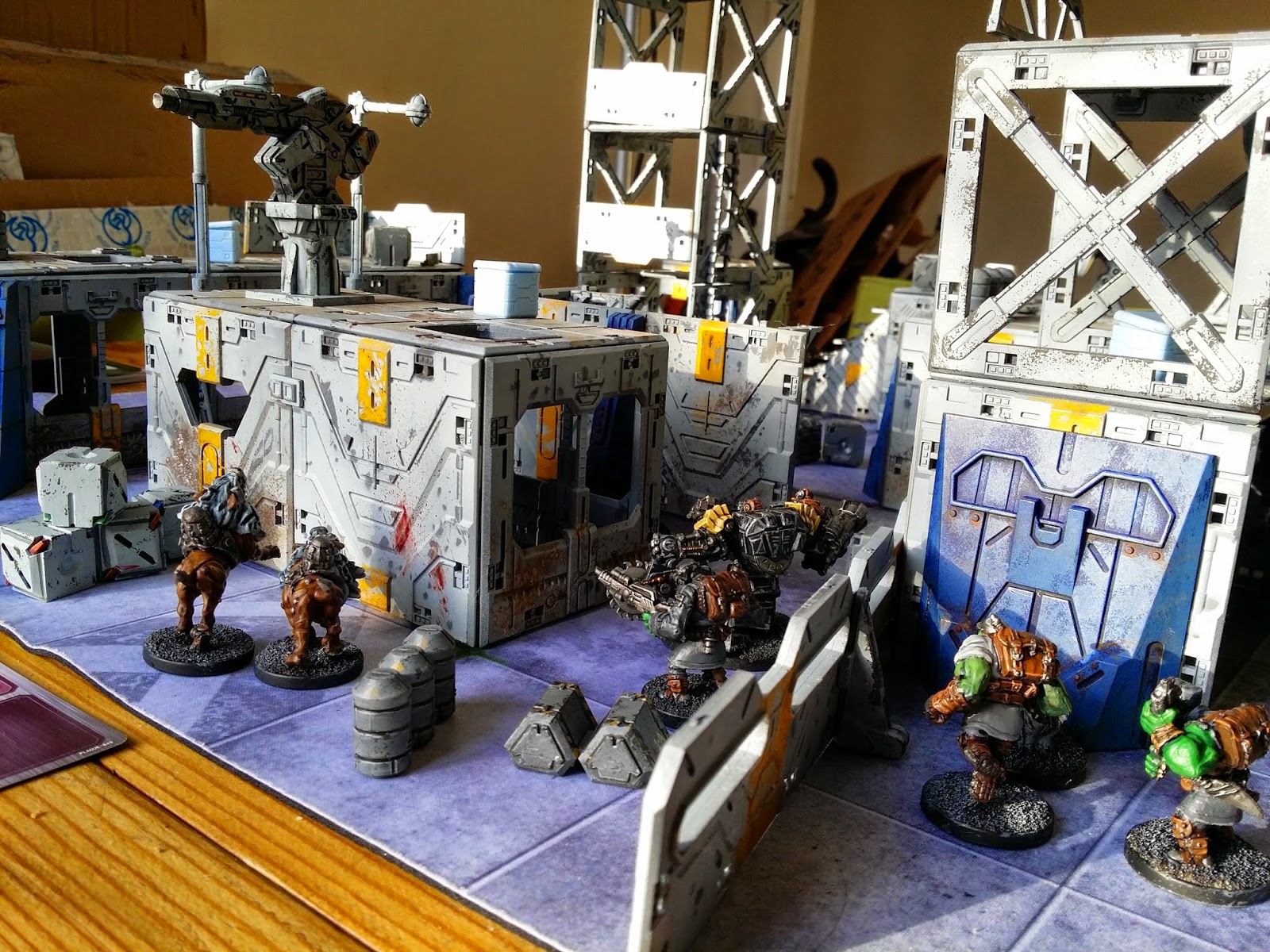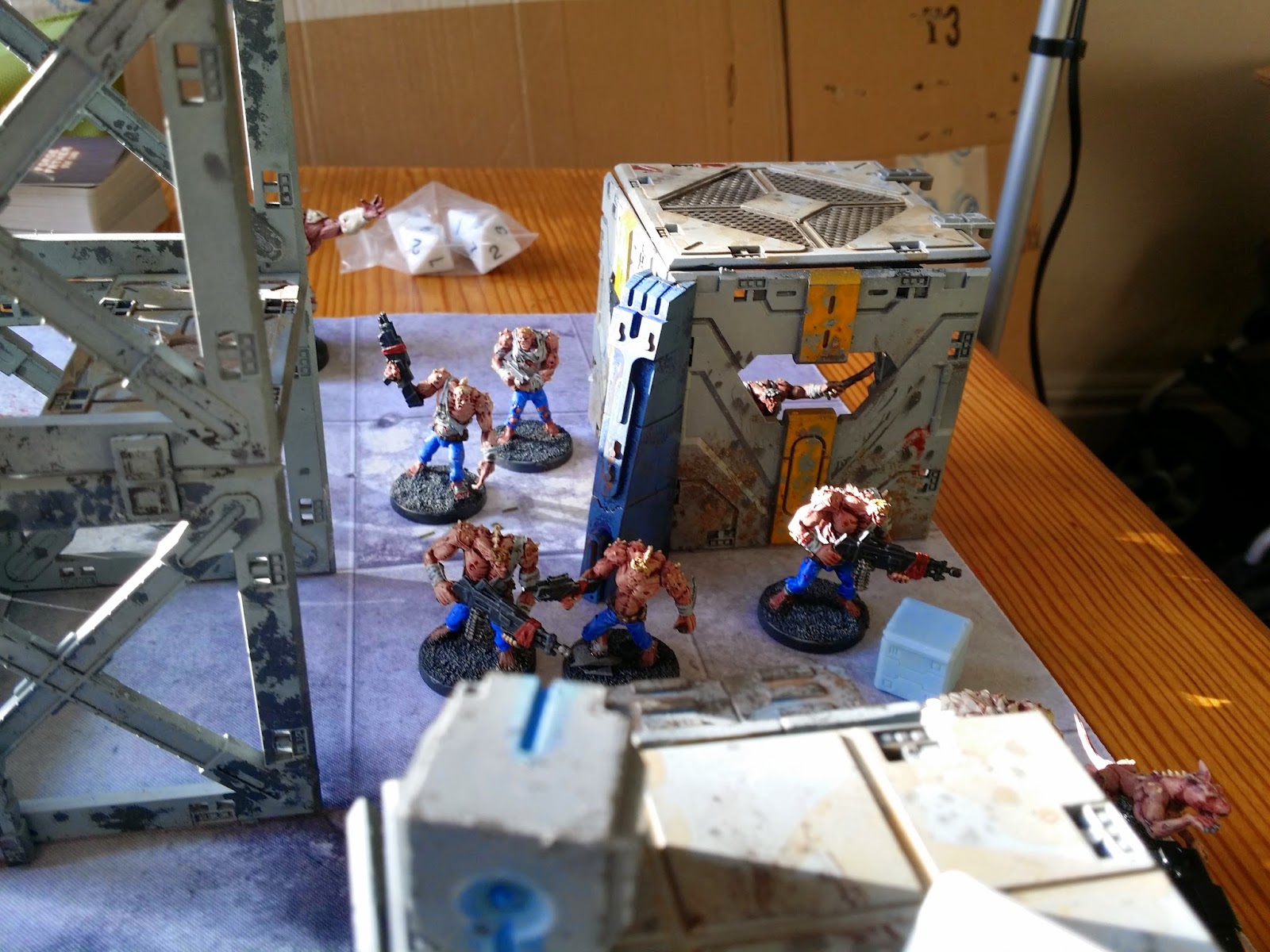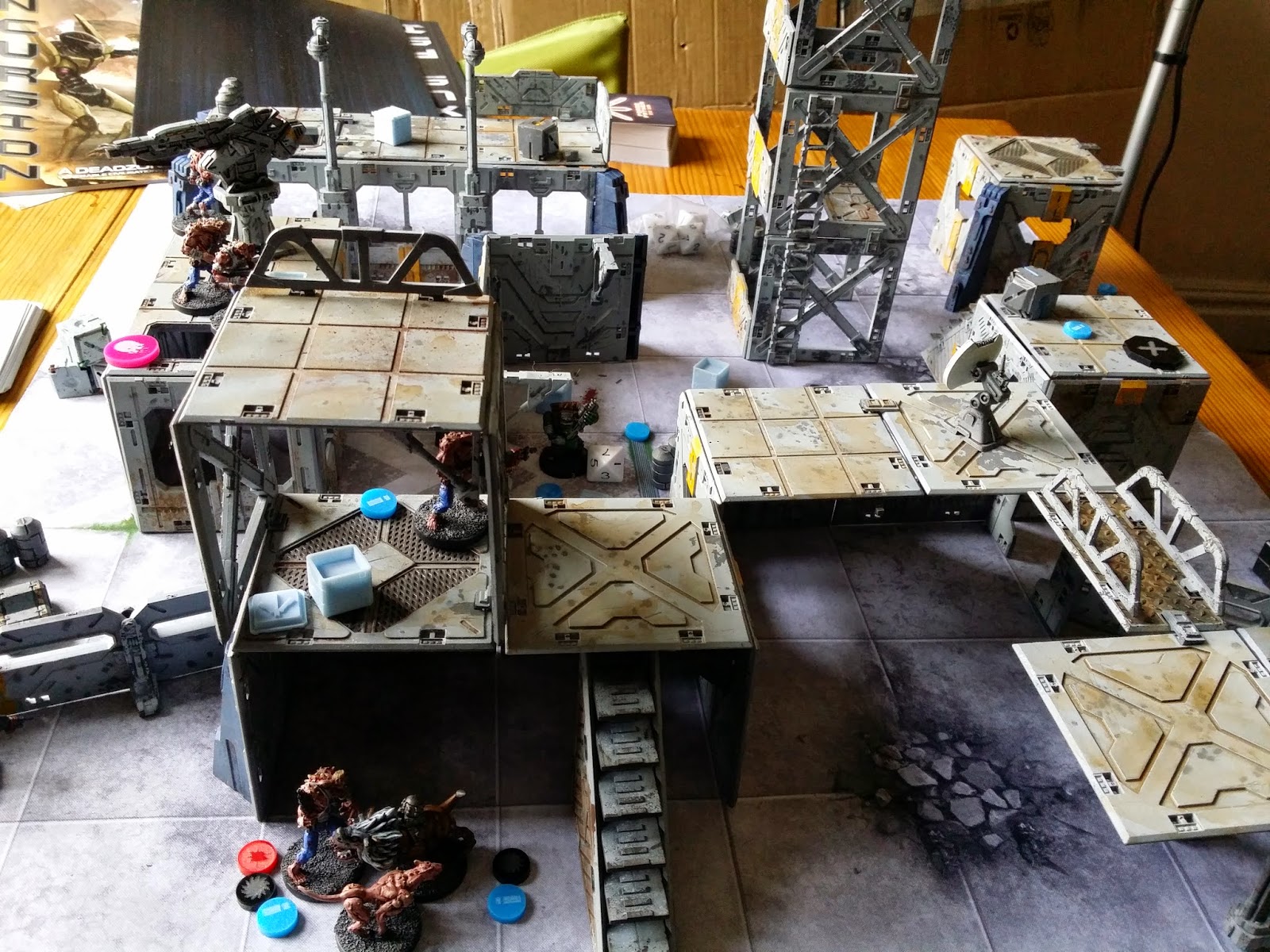Well, I always did. I'm one of those guys single-player gaming can really appeal to. I get out and play, don't get me wrong. But with a working wife and two kids to take care of, one trip a week to the local club is about as much as I can guarantee each week. So the opportunity to play many of the games I have spent hundreds of dollars on while at home and alone is very welcome.
 |
| She made me buy this table to 'eat' on. Hah. |
I have built up thirty zombies and even found time to paint twenty of them and will be trying them out in a game with a friend later in the week. But I also managed to get in several games alone using the AI deck and this post will be concentrating on that experience. Rules for using them come in the 'Contagion' expansion book.
In the classic AI game you set up your own Strike Force and an opposing Force of matching points. The game board and cards are then set up, pretty much like in a two-player game, but with a couple of important changes.
For a start the AI team gets two mission cards, both of which you can see from the start. This helps you work out what move the AI models will take as the game progresses.
 |
| They also tend to only start out where you can reach them without getting up. |
So, the big questions: does it work, and is it fun? Well, the answer to the first one is 'most of the time'.
Knowing which models to activate is generally straightforward and easy to do. It can get a bit murky though when you get to figuring out which action that model will prioritise though. The rules tell you AI models will essentially gravitate towards objectives and choose sure-things over maybes and when they will use cards and so on. But you can still find yourself in some complicated situations.
Having two missions often doesn't help as their objectives can be contradictory.
 |
| You guys go for killing the enemy, I'll do guarding this bit right here. |
In one game, for example, the AI Plague drew a survival mission and an infiltration mission. For assault models this was ok as they just raced across the board towards the enemy. For the slower moving guys though there was the difficult decision of which way to go when it was their time to move. Should they move into firing positions where they might be able to shoot the enemy but risk getting shot back? Or follow the 3d's across the board, but more slowly, thus also risking getting shot down?
 |
| Only the Leader understands 'Cover'. |
Using the cards also gives your AI models a distinct lack of tactical nouse. Whereas a human player would be willing to build forces in one location to provide overlapping or overwhelming fire on an objective before sending a model out to capture it, the AI will sometimes suicidally rush towards the nearest objective on the board. If they're unlucky in the activation order this can leave models all alone and easily picked off. Sometimes shooting at the enemy is the sensible option, but the rules still tell you a model runs off to sit on an objective.
 |
| We knew you were going to charge us. We just don't care. |
Knowing what the enemy will do next is also a big advantage. In the last game I played as Orx I knew I did not need to move my Commander to a safe position out of charge range of two Plaguehounds because they had the Infiltrate mission and would run straight past my model to get off the board. Instead I could do a Command action and leave him where he was behind a corner.
All that said, I think the answer to the second 'big' question is still 'yes'. Yes, that is, if you understand and accept this is not like a two-player game.
Games play out faster than two-player ones and the AI models can be dumb. They will not supply the same tactical challenge of a human opponent. Sometimes you will need to roll off to decide which action a model will take or you will find the action priorities nonsensical. Let it go. Sometimes human players do daft things to or catch you off guard.
Most of the games I played were still surprisingly close. Even though I, the human, won them all, several times the AI came within a couple of points of beating me.
With two mission cards the AI can score points very quickly. The first game I played the AI was getting a VP on each card for every turn they got through with fifty percent of their points on the boards. You also get 'bonus points' VP cards in the AI deck and can choose to start the AI with one, two or three, points from the get-go. The AI then, was getting up to five VP's just for surviving the first round.
The challenge becomes in achieving your goals as fast as possible while having to hold off the enemy from achieving two of theirs. The game knows the AI is dumb and it is weighted towards giving them fast easy VP's. Be faster.
Think of the bonus cards as a kind of handicap. Give them one if you want a fairly easy expedition, three if you want a real test of speed and tactical awareness.
A couple of tactical notes:
- avoid giving your AI faction points-heavy, high command total type models. With their default action, assuming they are in a safe position and they should be if you set them up fairly, is Command. Plague Stage 1's get six points in their Command pool and will most likely just stand on the spot using them.
- choose factions you know well for the AI. You have twice as many cards, dice, counters and models to keep track off than usual. Knowing your AI faction's special abilities and stats will help.
And a suggestion:
- prioritise one of the AI faction's missions over the other from the start. Still let them score points for both, but deciding for example whether infiltrating or capturing is more important will make their actions easier to determine and possibly make a tougher opponent.
I like Mantic's AI system. It is not perfect but its a good start. I think it could do with a few tweaks, but we have a great community who tend to be good at that sort of thing.
I have all six Deadzone factions, but have only played games using three. I'm looking forward to using the AI deck as an opponent to help me learn the others.
